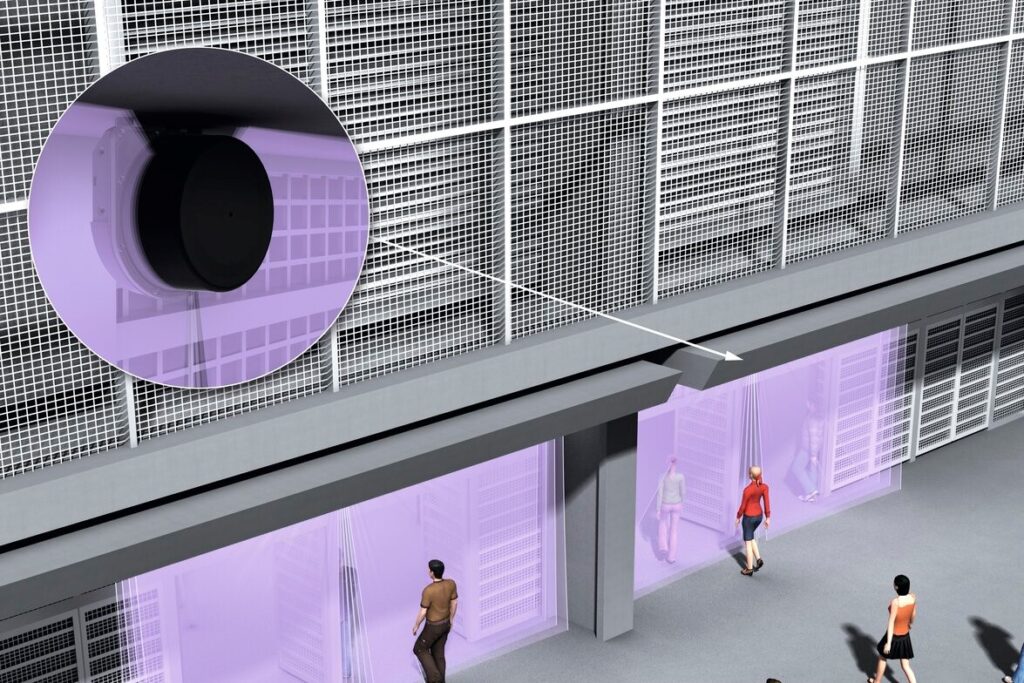SICK has developed two new sensor apps to help comply with distancing measures in working and public spaces.
The SICK PeopleCounter is based on a machine learning algorithm running on SICK’s MRS1000 3D LiDAR sensor. One or more sensors can count people at entry and exit points, or allow users to control the number of people occupying a pre-defined area in real time.
As it only sees the human outline, the PeopleCounter is anonymous with no need to detect or record any personal location or identification data. A master/slave mode makes it possible to combine several LiDAR Scanners to track larger areas with multiple entry and exit points.
SICK’s Social DistanceGuard app, meanwhile, works on the SICK TiM 2D LiDAR Sensor to monitor areas where the recommended distance between people must be upheld, such as in a queue, and provide an alert if they are too close. A signal, in the form of a light, audible alarm, or visual signal is triggered as soon as the distance between two people falls short of the minimum.
The settings can be used to change the required distance at any time. The presence of people can be detected and evaluated thanks to the SICK TiM’s 270° scanning capability and range up to 25 metres.
Neil Sandhu, SICK’s UK product manager for imaging, measurement and ranging said, “SICK’s rapid response to develop social distance monitoring technologies was enabled by the versatility of the AppSpace software development platform that facilitates the rapid development of plug-and-play solutions. When combined with SICK’s programmable, high-performance LiDAR scanning technology, the result is simple, self-contained devices that are quick to install, and easy for customers to integrate into wider customer control or monitoring systems.
“We’d be delighted to hear from any customers who have ideas for further applications that could be adapted to provide technology solutions during the current pandemic.”













